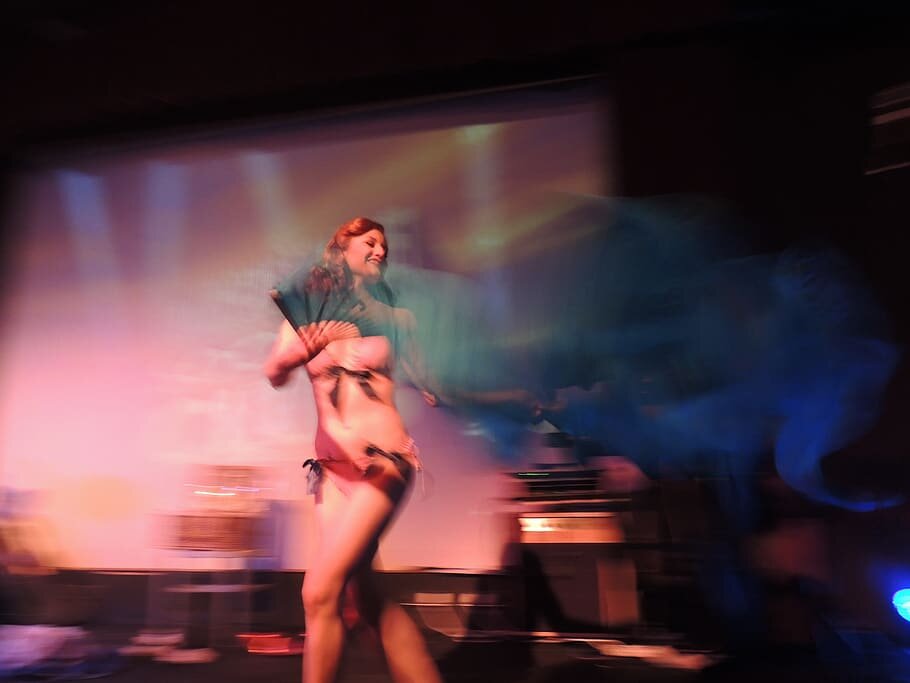
Burlesque Performers
Burlesque is confidence: being in control of one’s identity first through acceptance, and then through play.
BACKGROUND: For the class ME 216A: Advanced Product Design: Needfinding with Professor Dev Patnaik (Jump Associates, Wired to Care: How Companies Prosper When They Create Widespread Empathy) and Professor Ryan Baum (Jump Associates).
THE CHALLENGE: Identify the stories, findings, insights, and needs of burlesque dancers. Present findings to a panel of UX industry professionals.
TIME FRAME: 3 weeks
THE TEAM: Noelle Chow, Aniea Essien, and Elizabeth Gray
OUR PROCESS
We began our research by attending a Heels (dancing in high heels) workshop with professional dancer Efstratia “Effie” Mantzouranis, who describes herself as a somatic healer who uses dance to unlock a person’s feminine power, sexuality, and confidence. In our interview after the workshop, she shared how some women in her classes would cry during hip loosening exercises because “so much trauma is stored in the hips.” Effie emphasized the closeness between one’s emotional experiences and their physical body, and how dance unlocks physical and emotional vulnerability. We started thinking about how people’s identities are attached to their bodies and the deeper motivations behind dancing.
With this in mind, we we attended two burlesque shows in San Francisco and Oakland and talked with seven additional burlesque dancers from around the country whose experiences ranging from 2 years to over 20 years.
We created a framework comparing the motivations for why these dancers choose to engage with burlesque. One axis compared approach to the craft, whether dancers developed their skills from an intuitive, naturalistic perspective, or whether they took a more intellectual stance, engaging formally with their craft, both in training and through intentionality within the crafting of a narrative. The other axis we charted was the focus of the motivation’s impact, addressing whether activity in the burlesque space was oriented primarily towards improving internally or advocating for others. Performers ranged from intentional advocates to free spirits.
We were surprised to find that dancers Jessica and Pixie were grouped so closely together, because of their drastically different self-reported senses of success and involvement within the Burlesque community. This inconsistency made us consider deeply: how could two dancers with such contrasting experiences have such a similar “motivation profile” yet have such different success?
We compared all of the dancers and found that they shared a fact of their background: starting burlesque coincided with a major life transition. Trixie Fou Laurant (8 years) and Madam Chartreuse (9 years) started because of traumatizing splits from their partners. Pixie made a significant geographical move, but was more importantly in a swing of extremely low self-confidence. Oliver Yu and Storm were coming into the way they expressed their sexuality. Olive TuPartie was changing her cultural context. They all shared being in a transitory period in their lives.
OUR LEARNINGS
FINDING
While burlesque at its core is about confidence and empowerment, it is the performers who approached it during a period of uprooted identity in their lives that find lasting success.
While of course hearing these dancers stories was informative, we knew that in order to fully understand their experiences, we had to put ourselves in their stilettos and host a “Baby Burlesque” show. We bought garters and stockings from Amazon, made a Facebook event, and hung up a curtain. While our goal was to fully embody burlesque by dressing up like a burlesque dancer and meticulously rehearsing the choreography we learned in Effie’s class, we were disappointed after the performance to find that we unanimously felt like we had not gained that empathy. However, when we were narrowing in on our ideas, we realized that our performance experience actually supported the path we were on. Of course we would not be able to access the same level of confidence that successful burlesque dancers can. We were so caught up in nailing the choreography and trying on an identity that was not our own. Our performance made us feel confident in the truth of our insight.
INSIGHT
Those who might feel a lack of control due to monumental experiences, such as going through a divorce or questioning their sexual identity, crave the agency to shape how they present their identity. The burlesque craft allows them to play with various forms of identity expression while never straying from showing, quite literally, exactly who they are.
To these ends, burlesque dancers have an integrated set of creative and personal needs. We focused on needs connected to the common need to feel confident, which stemmed into the contextual needs for dancers to express creativity and explore their own identity. How do burlesque dancers do this? Successful burlesque dancers need to create an authentic narrative to present on stage. At their core, burlesque dancers fully embrace vulnerability through sharing their physical and emotional nakedness on stage, telling their most authentic story. An uprooted identity allows these people the flexibility and opportunity to remake themselves on stage, sharing with the audience exactly who they are.
NEEDS
To feel connected and confident
To tell their most authentic story
To create an authentic narrative to share on stage
To share emotional and physical nakedness




